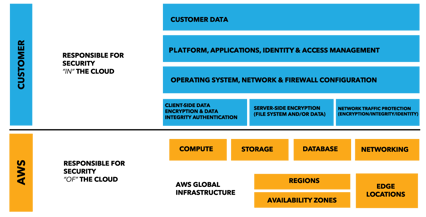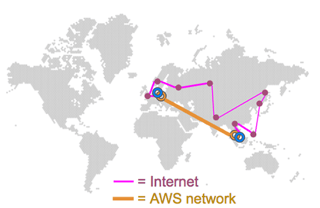3 reasons to move your ETL to the web, cloud
ETL development heavily relies on the desktop with...

Cloud computing is the way to the future, and the way to bring your company to the next level. With the abillity to have enterprise grade services and technologies at a significantly lower price, your company can focus on creating more value while your IT department has to spend less time on maintaining infrastructure.
These are our top five reasons to move your BI infrastructure to the cloud:
Security was one of the major concerns in the starting days of cloud computing. The fact that your data was not on your machines and premise caused some distrust. But over time cloud providers have proven that because of the scale they work on and the industries they serve, they actually provide better security and have more specialised staff than companies with on premise datacenters. Over the years AWS has implemented various audit and compliance standards for both physical locations and network and hardware. For example, Amazon datacenters are not visibly recognisable from the outside of the building, and the way the clusters of datacenters are built will garantee that when one physical datacenter (availability zone) fails, your services and resources will still be available. Over the years Amazon has made several deals with US government agencies to store their sensitive data, proving the trust they have in the security of the AWS network and systems.

Take advantage of the global infrastructure of AWS to bring your content closer to customers, and allow your employees to work from anywhere, anytime. Using cloudfront, your customers can access your website and applications on the other side of the world as if they were in the same zone as the server. This allows you to easily serve content in new markets and create more revenue.

Other services to increase productivity of your employees are:
Stop spending time ordering new hardware and spend less time installing, configuring and maintaining it! The cloud is a place for rapid and agile development. Your infrastructure team can spend more time supporting the development teams creating inovative products. Setting up advanced environments and managing and deploying multiple environments is a lot easier through infrastructure as a service, using tools and scripts to set up new development and testing environments for your development teams. Amazon also provides virtual and dedicated machines for complex workloads such as video rendering, image recognition or deep learning algoritms.
Although you can just move you existing infrastructure to the cloud, AWS comes with off-the-shelf BI and analytics functionality. Just to name a few: Redshift, a distributed columnar analytical database, is your data warehouse of choice, DynamoDB serves your NoSQL needs, Data Pipeline handles your ETL. Having these options available in the cloud allows snappier, more agile projects than what can be achieved with self-managed, on-premise infrastructure.
Using the cloud, you can also provision extra instances to scale out your applications. If you have a webshop and Black Friday is around the corner, the infrastructure team can allocate extra servers to handle the expected extra traffic. The team can also use metric based triggers to add extra servers. Your company has posted a press release and it gets unplanned global attention? By watching the traffic to your website, extra webservers can automaticly be added to handle the traffic. AWS also garantees an uptime of 99.999% (5 minutes 15 seconds downtime per year) and a durability of 99.999999999%. Because of the global infrastructure, the loss of power to a region will not cause your website and services to go down.
One of the key features of cloud computing is that your capital expenses are non existent, you only have operational expenses and you only pay for what you use. When you no longer need the resources, you just stop using them and stop paying for them. Because of the economy of scale AWS operates at a lower cost and you get your services faster and cheaper.

ETL development heavily relies on the desktop with...

Analytics projects are often treated as ad-hoc projects. Code and content are...

As discussed in a previous post, there are many reasons to move...
Blog comments